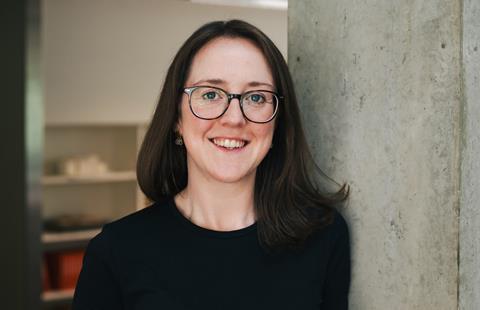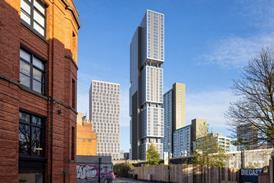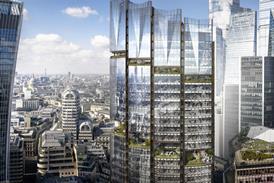Eleanor Jolliffe explores why post-occupancy evaluation, a powerful tool to improve design and prove value, remains so often overlooked

Why are we so shy of learning from our built work? And are we shy – or is it just hard to do?
Post Occupancy Evaluation (POE) – the process of evaluating buildings after they have been occupied for some time, or ‘are we actually any good at designing buildings’ – has been a discipline since the 1950s, and the RIBA has been pushing for its inclusion as a standard part of architectural services since 1965. However, just 19% of British architecture practices offer it as a service.
I’ve been undertaking some POE over the last year and have been talking to many colleagues and friends at other practices about it. I hear the same issues over and over again: clients just want you gone when the building is finished (or some other issue with access to a finished building); there’s a PI issue (we shouldn’t go looking for problems); and it’s difficult and costly to do. There is some truth to these – but not enough to truly prevent architects from doing POE. For me, there’s also the key question in its favour: can we truly say we are any good at designing buildings if we never check to make sure they work as well as we thought they would?
To tackle the main queries: rather than being irritated that we have come back a year after they moved in, the clients we have contacted have been delighted to show off the way they use the building, and almost touched that we cared enough to ask.
Most PI covers POE, though do check with your provider. I would also query – if problems are found, isn’t it better that they’re learnt from so that they’re not repeated in the future? The problems we have uncovered so far have been so minor that it is reassuring – if residents are worried about how limescale shows on the grout colour, the building itself is working well! (And, as an aside, we know not to use that grout colour again!)
The Construction Engineering Research Laboratory has found that every dollar spent on POE resulted in ten dollars saved on operating and redesign costs
The cost element is trickier. It does take time to do POE, and in larger schemes (which is largely what the practice I work for does) getting a good response rate to user surveys is hard. This year has seen us hold residents’ meetings in residential blocks, leave flyers over academic buildings, and smilingly haunt building lobbies with a lanyard, a QR code, and penguin biscuits as an incentive. We’re still fine-tuning our technique, but our response rate is getting better – and the data we’re getting is worth the time we’ve spent. We’ve been working with the ARUP BUS partnership programme, which anonymises and crunches these user surveys for us, which also deals with the GDPR issues.
It’s worth noting that the Construction Engineering Research Laboratory has found that every dollar spent on POE resulted in ten dollars saved on operating and redesign costs (Research Design Connections, 2003). POE can also help reduce in-use energy costs if, for example, an MEP commissioning mistake is found. If your client has future phases, the lessons learnt can feed into improving these, and you can also gain BREEAM points for POE. The benefits are myriad to both client and architect – but I will admit tricky to quantify in pounds and pence.
There are multiple valid methodologies for POE. Not all of them will work with the scale or user profile of every project. At its simplest, though, it is going back to ask what worked, what didn’t, what’s been changed, and to consider what you might do differently were you to do it again. From this, a world of complexity can emerge – but it doesn’t have to.
As early as 1965, the Royal Institute of British Architects (RIBA) recommended the implementation of Stage M ‘feedback’ in its Handbook of Architectural Practice and Management as the final part of its (inaugural) Plan of Work. It required architects to revisit their projects two to three years after the building had been completed and occupied in order to glean knowledge which could be used to the service of future clients. In 1972, this stage was withdrawn from the Architect’s Appointment following a lukewarm reception.
Academic study has long demonstrated that effective feedback loops can measurably improve design quality
A workstage with a similar purpose, Stage 7 ‘in use’, was reintroduced in the 2013 RIBA Plan of Work, again designed to encourage POE and post-project review. This time it was added in the context of growing concerns around climate change, and the ability of POE to improve performance gaps between designed and inhabited energy use. However, despite widespread support of climate manifestos such as ‘Architects Declare’, the 2020 RIBA Plan of Work changed the name of this workstage to ‘Use’ and suggests that “on the majority of projects, the design team and the construction team will have no Stage 7 tasks to undertake.” It is now asking for a year’s energy data to form part of awards submissions. It’s clear the RIBA believes we should be doing this – but is struggling to gain buy-in from architects.
I remember as far back as primary school science we were told that we should have a hypothesis, create a methodology, undertake your experiment, and then evaluate your results. It’s basic stuff. In architecture, however, we are all too often stopping short at undertaking the experiment, or only evaluating the results from lessons learnt during construction. We need to be less half-hearted about evaluating our results post-occupation.
Academic study has long demonstrated that effective feedback loops can measurably improve design quality and key building performance indicators. Additionally, and perhaps most significantly in our world of ever-lower fees, the data you gain from POE can give you concrete proof of the value of your architectural services. Here is my plea: let 2025 be the year you have a go at POE – even if it’s just for one building. Moan at me in the comments if it turns out to be a waste of time – but I imagine it won’t.
Postscript
Eleanor Jolliffe is a practicing architect and co-author of Architect: The evolving story of a profession
















2 Readers' comments